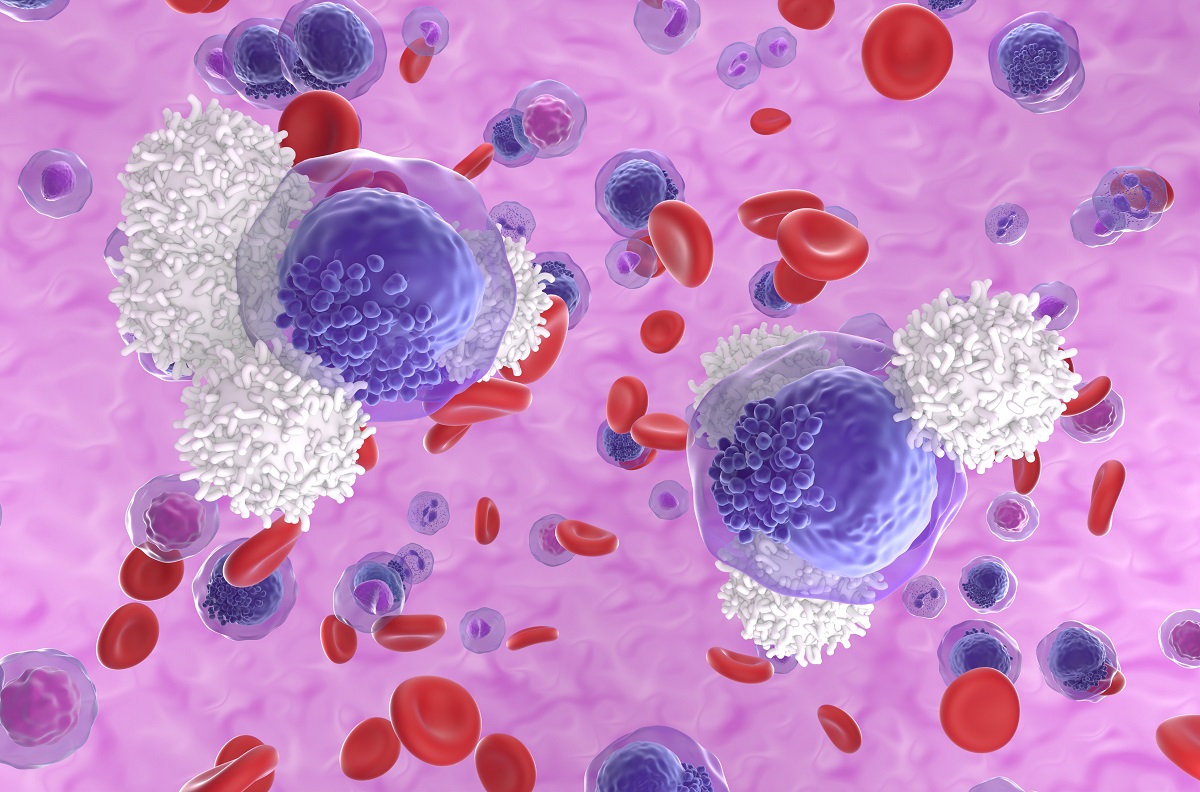KEY TAKEAWAYS
- The study aimed to investigate the efficacy and safety of GO plus high-dose chemotherapy in patients with newly diagnosed AML.
- Researchers noticed that GO-based treatment shows efficacy in patients with fit AML.
In this retrospective real-life multicenter study, Gemtuzumab-ozogamycin (GO) is approved in combination with high-dose chemotherapy for treatment-naïve low- and intermediate-risk acute myeloid leukemia (AML).
Bianca Serio and the team aimed to evaluate the efficacy and safety of GO plus high-dose chemotherapy in newly diagnosed patients with AML.
They performed an inclusive analysis involving 31 fit low- and intermediate-risk AML patients treated with GO-based regimens in a real-life multicenter study. Results were compared with a control cohort treated with 3 + 7 alone. The complete remission (CR) rate after induction was 77%, with most responders (45%) undergoing two GO-based consolidations. Minimal residual disease (MRD) negativity was observed in 17 cases (55%) after consolidation. Low genetic risk was associated with a higher CR rate compared with intermediate-risk AML (88% vs. 33%; P < .001) and prolonged overall survival (OS; hazard ratio, 0.16; 95% confidential interval, 0.02-0.89; P < .001).
Addition of GO resulted in a survival benefit for low-risk AML (median OS not reached vs. 25 months; P = .19) but not for intermediate-risk subjects (10 vs. 13 months; P = .92), compared with the control group. Moreover, GO-treated patients experienced fever of unknown origin or sepsis in 42% or 36% of cases, respectively, with one death during induction due to septic shock, with similar rates compared with the control group (P = .3480 and P = .5297, respectively). No cases of veno-occlusive disease after allogeneic transplantation were observed.
The study concluded that GO-based treatment demonstrated efficacy in fit newly diagnosed AML patients, particularly those with low genetic risk and core binding factor, as evidenced by high MRD negativity rates. However, limited benefits were observed in intermediate-risk AML cases. The findings underscore the need for further validation on larger prospective cohorts to fully elucidate the treatment’s effectiveness across different risk groups.
No funding information was provided.
Source: https://pubmed.ncbi.nlm.nih.gov/38662362/
Serio B, Grimaldi F, Ammirati L, et al. (2024). “Limited efficacy of 3 + 7 plus gemtuzumab ozogamycin in newly diagnosed fit intermediate genetic risk acute myeloid leukemia patients.” Cancer Rep (Hoboken). 2024 Apr;7(4):e2044. doi: 10.1002/cnr2.2044. PMID: 38662362; PMCID: PMC11044913.



